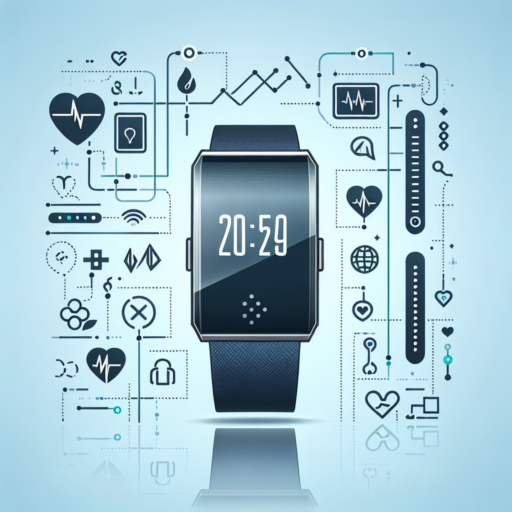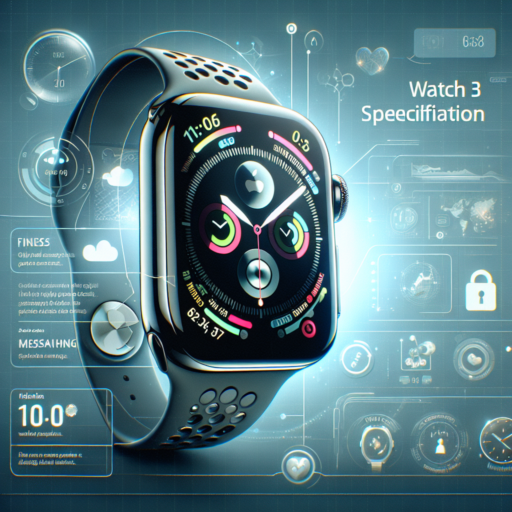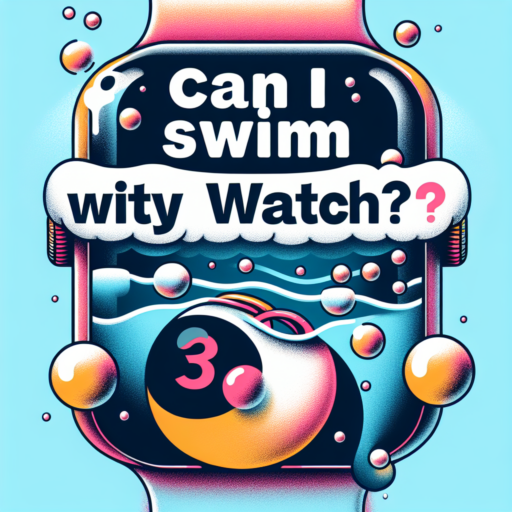Fitbit Sense: An Overview of Its Impressive Features
The Fitbit Sense stands out in the market of smartwatches with its wide array of health-focused features. Designed not just to keep up with your active lifestyle, but also to offer insights into your well-being, the Fitbit Sense introduces an impressive suite of sensors and tools aimed at monitoring your health with precision. From advanced heart rate tracking to stress management scores, this smartwatch is tailored for those who seek a deeper understanding of their physical and mental health.
Advanced Health Monitoring Tools
The cornerstone of the Fitbit Sense is its advanced health monitoring capabilities. It includes an innovative EDA (Electrodermal Activity) sensor that tracks the body’s response to stress, offering users a quantitative measure of their stress levels. Coupled with the ECG (Electrocardiogram) app, which monitors heart rhythm for atrial fibrillation, the Fitbit Sense provides critical insights into heart health. Additionally, its skin temperature sensor can detect changes over time, which could signify fever, illness, or the beginning of a new menstrual cycle.
Fitness and Activity Tracking
Beyond health monitoring, the Fitbit Sense excels in tracking numerous activities and workouts, supporting users in achieving their fitness goals. With built-in GPS, it accurately tracks runs, walks, and hikes, providing detailed stats like pace, distance, and continuous heart rate without needing a phone. The smartwatch also automatically recognizes and records various exercises such as swimming, cycling, and elliptical workouts, making every session count towards your fitness objectives.
Integration with mindfulness and sleep quality tracking further enriches the Fitbit Sense’s offerings. Its Daily Readiness Score helps you understand when to push hard in training and when to prioritize recovery, using metrics like activity levels, sleep patterns, and heart rate variability. This holistic approach ensures that users not just work on their physical fitness but also give equal importance to rest and mental well-being, making the Fitbit Sense a comprehensive health and wellness companion.
Understanding the Screen Size of Fitbit Sense: A Comprehensive Guide
When it comes to wearable technology, the screen size of your device plays a pivotal role in your overall user experience. The Fitbit Sense, one of the newest additions to the Fitbit family, sports an innovative screen design that offers users a seamless interface to track their health and fitness goals. But what exactly makes the screen size of the Fitbit Sense stand out? Let’s delve into the details that make this wearable device not just a fitness tracker but a smartwatch that fits perfectly into your lifestyle.
Optimal Display for Enhanced Readability
The screen size of the Fitbit Sense is meticulously designed to enhance readability without compromising on the sleekness of the device. The bright and clear display ensures that texts and icons are sufficiently large for easy navigation, making it ideal for users of all ages. Whether you’re checking your heart rate, responding to a text, or glancing at your step count, the Fitbit Sense provides an effortlessly readable interface, even in bright sunlight.
Interactive Touchscreen Experience
Beyond just displaying information, the Fitbit Sense’s screen size is optimized for an engaging interactive experience. With just a swipe or a tap, users can navigate through the various features and apps available on the device. This level of interactivity is possible because of the thoughtfully planned screen dimensions, which strike the perfect balance between functionality and form factor. The responsive touchscreen makes it easy for users to interact with their Fitbit Sense, transforming how we view and use our fitness trackers.
Moreover, the decision to prioritize a convenient screen size on the Fitbit Sense signifies a broader trend in wearable technology. It demonstrates a commitment to creating devices that are not only powerful in terms of health and fitness tracking but also incredibly user-friendly. As users, we no longer have to sacrifice usability for advanced features, thanks to innovations like the Fitbit Sense.
How Does The Fitbit Sense Screen Size Compare to Other Smartwatches?
When it comes to smartwatch screen sizes, the Fitbit Sense has sparked considerable discussions among tech aficionados and fitness enthusiasts alike. Not only does its display play a critical role in readability and functionality, but it also greatly influences user experience. Understanding how the Fitbit Sense screen size measures up against its competitors provides valuable insights for potential buyers evaluating their options.
The Fitbit Sense boasts a 1.58-inch AMOLED display, offering vibrant colors and sharp resolutions. This size sits comfortably in the market, providing ample space for users to navigate menus and read notifications without feeling cramped. In comparison, many other smartwatches fluctuate in screen size, often ranging from 1.2 inches to 1.78 inches. Such variations highlight the Fitbit Sense’s position as a contender that balances display dimensions with overall wearable comfort.
When directly comparing to key players in the smartwatch industry, it’s evident that the Fitbit Sense’s screen size is thoughtfully designed. For instance, the Apple Watch Series 6 features a slightly larger display of up to 1.78 inches, catering to those who prioritize screen real estate. Conversely, smaller options like the Garmin Vivoactive 4s, with a 1.1-inch diameter, focus more on compactness and battery efficiency. Thus, the Fitbit Sense represents a middle ground, aiming to meet diverse user preferences on screen size without compromising on functionality.
No se han encontrado productos.
Maximizing Your Fitbit Sense: Tips for Utilizing Its Screen Size Effectively
Maximizing the screen size of your Fitbit Sense can significantly enhance your user experience. With a thoughtful approach to customization and the use of available features, you can make the most of its display for both fitness tracking and smartwatch functionalities. Here are some practical tips to leverage its screen real estate more effectively.
Customizing Your Watch Face
One of the simplest yet most effective ways to maximize your Fitbit Sense screen is by customizing the watch face. The right watch face not only provides a refreshing look but can also offer a quick glance at your most important stats. Explore the Fitbit app to find watch faces that display more information or use minimalism to enhance readability. Prioritize watch faces that show steps, heart rate, and calories burned for a comprehensive overview at a glance.
Efficient Use of Widgets and Shortcuts
Widgets and shortcuts are underutilized features that can significantly improve your interaction with the Fitbit Sense. By carefully selecting and organizing widgets, you can access your most used features without unnecessary scrolling. Consider adding shortcuts for exercise tracking, weather updates, or timers to your home screen for quick access. This ensures you’re using the screen space not just for display, but for streamlined navigation and functionality as well.
With these strategic adjustments, you can turn the Fitbit Sense’s screen from merely a display to a powerful tool that complements your active lifestyle. Embrace the flexibility and customization options available, and you’ll find that the Fitbit Sense’s screen size is more than sufficient for your needs.
The Impact of Fitbit Sense Screen Size on Your Fitness Tracking Experience
The size of the screen on your Fitbit Sense can significantly influence how you interact with your device and monitor your fitness progress. A larger display not only enhances visibility but also improves the usability of the device, making it easier to navigate through menus and view detailed analytics at a glance. This aspect is crucial for users aiming to streamline their fitness tracking and optimize their workout routines based on the data provided.
With the Fitbit Sense, the emphasis on screen size becomes apparent when utilizing features such as real-time exercise stats, on-screen workouts, and detailed sleep analysis. These features require a delicate balance between screen size and readability, ensuring that the information is not only accessible but also easily interpretable without disrupting the user’s activity. The enhanced screen size of the Fitbit Sense facilitates this balance, offering a broader view and allowing for more comprehensive data representation.
Another aspect to consider is the aesthetic appeal and the practical benefits of a larger screen. Users who often engage with notifications, app functionalities, or even use their Fitbit Sense for mobile payment find a significant difference in the experience provided by a larger screen. It effectively cuts down on the effort required to interact with the device, making the fitness tracker not just a tool but an integral part of the user’s lifestyle, seamlessly blending into daily activities.
Fitbit Sense Screen Size: Ideal for Fitness Enthusiasts?
The Fitbit Sense stands out in the crowded market of smartwatches and fitness trackers, not just for its comprehensive health tracking capabilities, but also for its screen size. Understanding the impact of the Fitbit Sense’s screen size on user experience, especially for fitness enthusiasts, is crucial. This evaluation focuses on how the dimensions of the display accommodate the needs of those who are serious about tracking their fitness progress and staying informed on their health metrics at a glance.
Visibility Under Different Conditions: The Fitbit Sense boasts a screen that is designed to be easily readable in a range of lighting conditions. Fitness enthusiasts often find themselves in varying environments – from the dim light of a dawn jog to the bright sun of a midday hike. The size of the Sense’s screen ensures that whether you’re checking your heart rate after a strenuous set of exercises or glancing at your step count while walking in sunlight, the information is displayed prominently and clearly.
Optimized Screen Space for Detailed Metrics
With fitness tracking, more data often means more insight into your health and performance. The Fitbit Sense’s screen size is thoughtfully designed to display a wealth of information at once without overwhelming the user. It means that metrics such as heart rate variability, daily activity levels, and even sleep patterns are all available at a glance. The layout and size of the display ensure that these detailed metrics are not only legible but also presented in a user-friendly manner. This optimization of screen space is particularly beneficial for fitness enthusiasts who rely on these metrics for fine-tuning their routines and achieving their health goals.
Navigating the Fitbit Sense Interface: A Look at the Screen Real Estate
Navigating the interface of the Fitbit Sense presents an intuitive and user-friendly experience, designed to keep users engaged and informed about their health metrics and notifications. At the heart of this experience is the device’s screen real estate, which plays a crucial role in displaying information clearly and efficiently. Understanding how the Fitbit Sense utilizes this space can enhance the user’s interaction and overall satisfaction with the device.
The Fitbit Sense boasts a vibrant and responsive touchscreen display, which serves as the gateway to all its features. Critical to its design is the optimization of screen real estate, ensuring that users can easily access the most important information with minimal swipes and taps. The layout is carefully structured to present health statistics, such as heart rate and steps, in a legible and visually appealing manner. This emphasis on efficient information display demonstrates Fitbit’s commitment to a user-centric design philosophy.
Moreover, the Fitbit Sense incorporates various customizable watch faces, allowing users to personalize their screen layout according to their preferences and needs. From simple, information-dense displays to more graphical, minimalistic designs, there is a wide range of options to suit different tastes and requirements. This customization plays a pivotal role in maximizing screen real estate, as it enables users to prioritize the data most important to them, ensuring a convenient and tailored experience.
Fitbit Sense Visuals: How Screen Size Enhances Your Smartwatch Experience
The screen size of your Fitbit Sense plays a pivotal role in determining the overall quality of your smartwatch experience. A larger display not only augments the clarity and readability of on-screen content but also significantly enhances user interaction with the device. Whether you are tracking your daily fitness goals or managing notifications, a spacious screen promises an immersive and efficient user experience.
Improving Readability and Accessibility
The optimized screen size of the Fitbit Sense smartwatch ensures that texts and graphics appear larger and clearer, making it easier for users to read notifications and track their health metrics without straining their eyes. This increased readability is especially crucial for users who rely on their smartwatch throughout the day for various tasks like reading messages or checking workout stats. A larger display means information is not only more accessible but also more legible, improving the overall functionality of the device.
Enhanced User Interaction and Navigation
Another key benefit of a more substantial screen size is the improved user interface and navigation it offers. With more screen real estate, Fitbit Sense facilitates smoother and more intuitive interactions, allowing users to easily swipe through menus and select options without the hassle of dealing with cramped layouts. This enhancement in screen size translates to a more satisfying and less frustrating experience when using the device, showcasing how crucial visual design is to user satisfaction.
In summary, the screen size of the Fitbit Sense is integral to maximizing the practicality and enjoyment of your smartwatch. It not only makes reading and accessing information more effortless but also enriches the interaction with the device by offering a cleaner, more navigable interface. The careful consideration of visual elements like screen size demonstrates Fitbit’s commitment to user-centric design in creating an exceptional wearable experience.
Technical Breakdown: The Specifications of Fitbit Sense Screen Size
Understanding the specifications of the Fitbit Sense screen size is paramount for tech enthusiasts and potential buyers who want to ensure this smartwatch meets their daily requirements. The Fitbit Sense stands out in the market not just for its health-monitoring capabilities but also for its sophisticated design and user-friendly interface, which is largely influenced by its screen dimensions. In this section, we’ll delve into the specifics of the screen size and what it means for users.
The Fitbit Sense features a high-resolution, color AMOLED display that promises vibrant visuals and sharp text, making it easy to read your stats, notifications, and messages at a glance. The screen size is thoughtfully designed, ensuring that the display is large enough for easy interaction yet compact enough to keep the device sleek and unobtrusive on your wrist. This balance is crucial for those seeking both functionality and style in a smartwatch.
Moreover, the choice of an AMOLED screen plays a significant role in the device’s battery life. With its efficient power consumption, the Fitbit Sense is engineered to last several days on a single charge, even with continuous screen use. This makes the Fitbit Sense not only a powerful tool for health and fitness monitoring but also a reliable companion for day-to-day activities.
Comparing Fitbit Sense Screen Size with Fitbit Versa and Charge Models
When it comes to choosing the right Fitbit model, the size of the screen plays a pivotal role in the decision-making process. The Fitbit Sense, Versa, and Charge models offer different screen sizes tailored to various user preferences. In this article, we delve into the specifics of each model’s display dimensions, helping you understand how they stack up against each other.
Fitbit Sense: A Closer Look at the Display
The Fitbit Sense stands out with its advanced health and wellness features, but its screen size is another aspect that catches the eye. Boasting a larger display compared to its predecessors, the Sense model offers improved readability and more space for displaying detailed health metrics. This makes it an ideal choice for those who prioritize a broader screen for their fitness tracking and health monitoring tasks.
Versa Series: Balancing Size and Functionality
The Fitbit Versa series, which includes Versa, Versa 2, and Versa 3, finds a middle ground between compactness and sufficient screen real estate. It’s designed for users who seek a harmonious blend of functionality and a decently sized display without going too large. Each iteration within the series slightly increases in screen size, catering to evolving user demands for clearer visibility and usability.
Fitbit Charge Models: Compact and Efficient
Comparatively, the Fitbit Charge models, including the latest Charge 4, focus on delivering essential fitness tracking features in a more compact package. The smaller screen size is engineered for efficiency and straightforward navigation, making it perfect for users who prefer a less obtrusive device. Despite the reduced display area, the Charge models do not compromise on the clarity and quality of the information presented.



